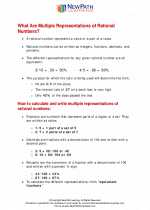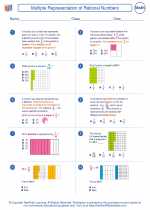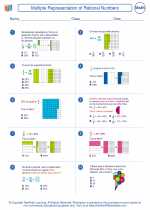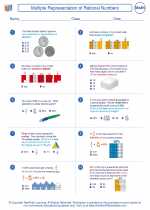Numeric Patterns
Numeric patterns are sequences of numbers that follow a certain rule or pattern. Identifying and understanding these patterns is a key element in mathematics. Numeric patterns can be found in various mathematical concepts such as arithmetic sequences, geometric sequences, and number patterns.
Arithmetic Sequences
An arithmetic sequence is a sequence of numbers in which the difference between any two consecutive terms is constant. This constant difference is called the common difference. The general form of an arithmetic sequence is: a, a + d, a + 2d, a + 3d, ... where a is the first term and d is the common difference.
Geometric Sequences
A geometric sequence is a sequence of numbers in which each term after the first is found by multiplying the previous term by a constant called the common ratio. The general form of a geometric sequence is: a, ar, ar^2, ar^3, ... where a is the first term and r is the common ratio.
Number Patterns
Number patterns are sequences of numbers that follow a specific rule. These patterns can be in the form of addition, subtraction, multiplication, or division. For example, the sequence 2, 4, 6, 8, ... follows the rule of adding 2 to the previous number to get the next number.
Study Guide
To understand numeric patterns, follow these steps:
- Identify the type of sequence: Determine if the sequence is arithmetic, geometric, or a general number pattern.
- Find the common difference or common ratio: For arithmetic and geometric sequences, identify the constant difference or constant ratio between consecutive terms.
- Extend the sequence: Use the identified pattern or rule to predict and find additional terms in the sequence.
- Analyze the pattern: Look for relationships and rules within the sequence to understand how the numbers are changing.
- Apply the pattern: Use the understanding of the sequence to solve problems and make predictions based on the given pattern.
Understanding numeric patterns is essential for various math concepts and real-world applications. Practice identifying and analyzing different types of numeric patterns to strengthen your mathematical skills.
.◂Math Worksheets and Study Guides Sixth Grade. Multiple Representation of Rational Numbers

 Worksheet/Answer key
Worksheet/Answer key
 Worksheet/Answer key
Worksheet/Answer key
 Worksheet/Answer key
Worksheet/Answer key
